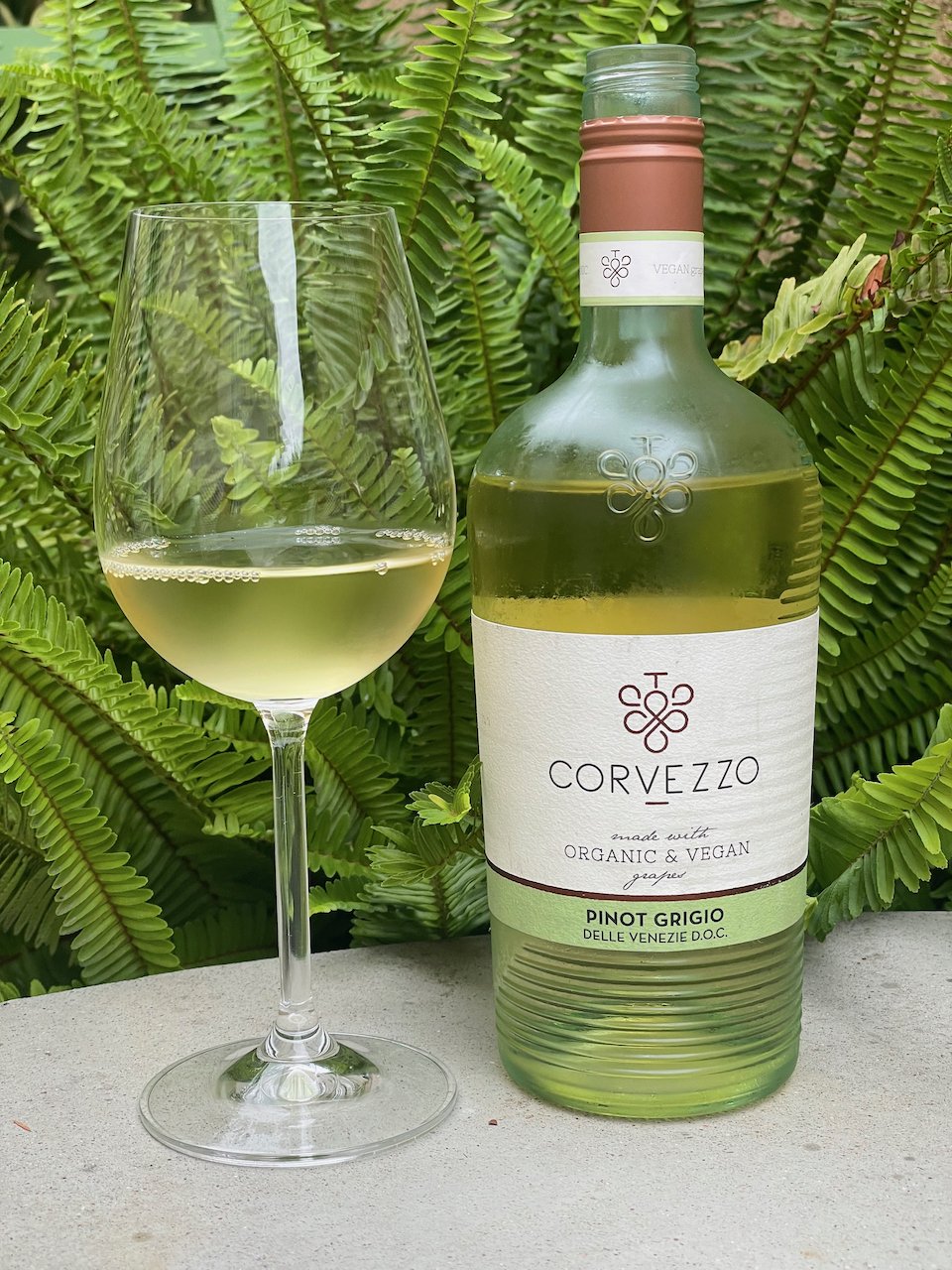2020 Corvezzo Pinot Grigio ($13)
Corvezzo is the leading name in organically grown, vegan wines from northeast Italy’s Veneto region.
Founded in 1960, the winery is in the village of Cessalto near Treviso, a sweet spot in the Veneto between the cool Dolomite Mountains and the sunny Adriatic Sea.
Family-owned and run, Corvezzo has the largest acreage in Italy of certified organic Glera and Pinot Grigio grapes. According to owner/winemaker Giovanni Corvezzo, his wines have not only adapted to organic farming - they have thrived, becoming stronger, with better balance and producing higher quality fruit. The signature wine style for him is fresh and bright.
This Corvezzo Pinot Grigio is produced from 100% Pinot Grigio grapes that underwent a soft cold crushing and pressing and were aged in concrete tanks (95%) and oak barrels (5%). It is straw yellow in color with gold glimmers. One the nose it has subtle hints of citrus, lemon and some minerality. On the palate it is light in body with peach, cantaloupe and nectarine, moderate acidity, smooth mouth-feel and just an ever-so-subtle hint of sweetness on the finish.
This Corvezzo Pinot Grigio is great tasting and very affordable, making it a great fit as the Behind the Cork™ Wine of the Week. Cheers!
Samples Provided by Corvezzo Winery , imported by Origins Organic Imports (via Creative Palate Communications)




